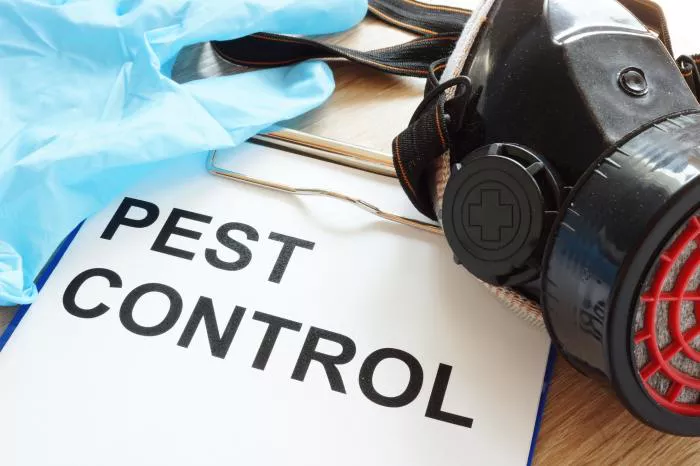Gardeners pour countless hours into nurturing their landscapes and gardens, only to face the persistent challenge of pest management. While pests can wreak havoc on greenery, Integrated Pest Management (IPM) offers an effective, sustainable, and eco-friendly solution. This strategy focuses not just on controlling pests but on maintaining the overall health of ecosystems.
Over the next few weeks, this column will delve deeper into IPM, exploring its principles, design, and how to implement a master plan for optimal results.
What Is Integrated Pest Management?
Integrated Pest Management, or IPM, is a science-based approach to pest control that balances economic feasibility, environmental sustainability, and health safety. Unlike traditional methods that often rely heavily on chemical solutions, IPM combines prevention, avoidance, monitoring, and suppression to minimize harm to humans, non-target organisms, and the environment.
IPM recognizes that pests are part of the ecosystem, with important roles to play, and focuses on managing pest problems rather than aiming for total eradication. It is a strategy tailored for those seeking a balanced, long-term solution to pest management.
The Principles of IPM: CARES
The goals of an IPM program can be summarized using the acronym CARES:
Comprehensive: IPM integrates a variety of tools, both preventive and corrective, to address pest issues. It considers multiple pests within an ecosystem and applies solutions only when needed, based on careful monitoring.
Adaptable: One of IPM’s strengths is its flexibility. The program can be adjusted to meet specific pest challenges as they arise, making it suitable for diverse situations.
Responsible: Rooted in scientific research, IPM prioritizes methods that are least harmful to humans, non-target organisms, and the environment.
Economical: By combining cost-effective practices with profitable pest management, IPM ensures that gardeners achieve their goals without overspending.
Sustainable: Designed for long-term impact, IPM reduces the recurrence of pest problems, promoting healthier ecosystems.
Redefining Pests
In the context of IPM, a pest is defined as any living organism that is “out of place.” This includes insects, weeds, fungi, and other organisms that disrupt the desired balance of a garden or landscape. However, it is important to recognize that these so-called pests often serve a role within the ecosystem.
Rather than seeking their elimination, IPM focuses on their management—striking a balance between controlling their negative impact and preserving their ecological function. This principle makes IPM distinct from traditional pest control methods, which often aim for complete eradication.
Why IPM Is Not About Eradication
For homeowners expecting total pest elimination, IPM may not be the ideal approach. Its philosophy is rooted in ecosystem management rather than annihilation. By manipulating living and non-living elements within an environment, IPM creates conditions unfavorable for pests to thrive, while encouraging the presence of desirable organisms.
For example, instead of applying broad-spectrum pesticides that could harm beneficial insects, IPM might promote introducing natural predators to control pest populations. This balanced approach ensures that ecosystems remain functional and resilient.
The Tools of IPM
IPM employs a range of preventive and corrective tools to create an ecosystem where pests struggle to establish themselves. These tools include:
Cultural Controls: Practices such as crop rotation, proper plant spacing, and regular maintenance to reduce pest habitats.
Physical Controls: Using barriers, traps, or manual removal to prevent pests from causing damage.
Biological Controls: Encouraging natural enemies like ladybugs or predatory wasps to keep pest populations in check.
Chemical Controls: When necessary, selecting targeted, low-toxicity pesticides that minimize harm to non-target organisms.
Monitoring and Identification: Regularly observing the garden to identify pests and assess their population levels, ensuring that intervention occurs only when necessary.
The Long-Term Benefits of IPM
Adopting IPM as a pest management strategy offers numerous advantages beyond immediate pest control:
Environmental Health: By reducing reliance on chemical pesticides, IPM helps protect water quality, soil health, and biodiversity.
Human Safety: Using fewer toxic substances minimizes health risks for gardeners and their families.
Economic Savings: IPM’s cost-effective methods ensure that gardeners spend only on necessary interventions, saving money in the long run.
Ecosystem Balance: Supporting beneficial organisms and reducing pest pressure creates a thriving, resilient garden environment.
Implementing IPM: A Holistic Approach
To successfully implement IPM, gardeners need to adopt a holistic perspective. This involves understanding the relationships within their garden ecosystem, from the soil microorganisms to the insects and plants. A well-designed IPM plan includes the following steps:
Assessment: Evaluate the garden to identify pests, understand their life cycles, and assess the level of damage they cause.
Prevention: Focus on cultural practices that reduce pest habitat, such as proper watering, mulching, and soil management.
Monitoring: Regular observation allows for early detection of pest issues, preventing small problems from escalating.
Action Thresholds: Define the level of pest activity that warrants intervention, ensuring that responses are measured and appropriate.
Integrated Solutions: Combine multiple control methods for effective and sustainable results.
Evaluation: Regularly review the effectiveness of the IPM strategy and make adjustments as needed.
A Sustainable Future for Gardening
As gardeners face growing challenges from changing climates and evolving pest pressures, IPM offers a proactive and thoughtful way forward. It encourages a deeper connection with the natural world and promotes gardening practices that benefit both people and the planet.
Whether you’re a seasoned gardener or just starting out, embracing IPM principles can lead to healthier gardens, reduced pest issues, and a more sustainable relationship with the environment. As this series continues, we’ll explore how to design and implement an IPM master plan tailored to your garden’s unique needs.
Related topics:


